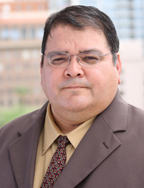Nearly half of eligible voters in Arizona don’t cast ballots

Joseph Garcia, with Tom Collins
July 27, 2018
This column first appeared July 26, 2018 at Arizona Capital Times.
That muted alarm of crisis you’re not hearing is the silent sound of nearly half of otherwise eligible voters in Arizona not casting a ballot, resulting in their voice not being heard on policy decisions affecting their daily and future life. And that silence could grow louder in future years if voter participation is not improved, according to a new report by Arizona State University.
“Arizona’s Voter Crisis,” produced by ASU Morrison Institute for Public Policy is part of a larger voter education/engagement joint project with the Arizona Citizens Clean Elections Commission. The report warns of a representative democracy that does not truly represent its citizenry, largely due to too many adult members of underserved populations not voting. Forty-five percent of Arizona’s voting-age citizens did not vote in the last presidential election.
Perhaps it would be easy for the status quo, which arguably could be said benefits from the current voter turnout, to simply blame the non-voter in allowing a small plurality to make decisions related to elected offices, public policy and ballot propositions. But the disconnect between a government and its people cannot be shrugged off as apathy – or in apathy – because our collective civic health could suffer as a result of an anemic electorate.
When people vote, they are more engaged in their community’s well being, shaping a better future for all. But when they are disengaged, they lose faith in the political system and become outliers with “physical health, altruism, compliance with the law, education employment and child welfare” all suffering as a result, according to a national study.
Arizona’s voting crisis could worsen if millennials and other lax voters – independents, ethnic minorities, poor people and under-educated individuals – do not vote in much larger numbers when they’re older.
The Morrison Institute report notes that older people (those 60 and over, and often white) make up the bulk of voters today, even though the state’s median age is 47. Millennials consist of nearly one-third of Arizona’s adults, yet only about half registered to vote in the 2016 election – predetermining low voter turnout among the 20- to 25-year-olds (including many Latino citizens). Consider that just 19.5 percent of the millennial population voted, while 62 percent of Arizona baby boomers (those born during the 18 years immediately following the end of World War II) cast ballots.
Another major obstacle is independents, whose growing roster numbers already rival or surpass Republicans and Democrats, respectively. In the 2016 general election, nearly four in 10 registered independents did not cast a ballot.
Participation by independents in the primary election is far worse, as noted in the upcoming Morrison Institute report, “Arizona Primary Elections: Primarily Forgotten,” also part of the Clean Elections education effort. Only 10 percent of registered independents voted in the 2016 primary election (independents can choose either a Republican or Democratic ballot). Voter turnout in the primary is poor across the board, with just 31 percent of registered Democrats and 43 percent of registered Republicans voting.
When looked upon as a whole, slightly more than 990,000 of Arizona’s 4.7 million potential voters (eligible voters of both the registered and non-registered variety) cast their ballot in the 2016 primary election. That translates into only about one in five Arizona eligible voters – hardly representative of a representative democracy.
The impact of low voter turnout in primaries is more alarming when considering that the Arizona primary election for legislative offices often serves as the de-facto general election, since many legislative districts are overwhelmingly Republican or Democratic, resulting in little to no opposition on the November ballot.
The issue of voting is complex, challenging and confounding. But with the report identifying certain gaps in the electorate, it is hoped that opportunities will surface as ways to collectively address Arizona’s voting crisis in a concerted effort to enhance a democracy of the people, by the people and for the people.